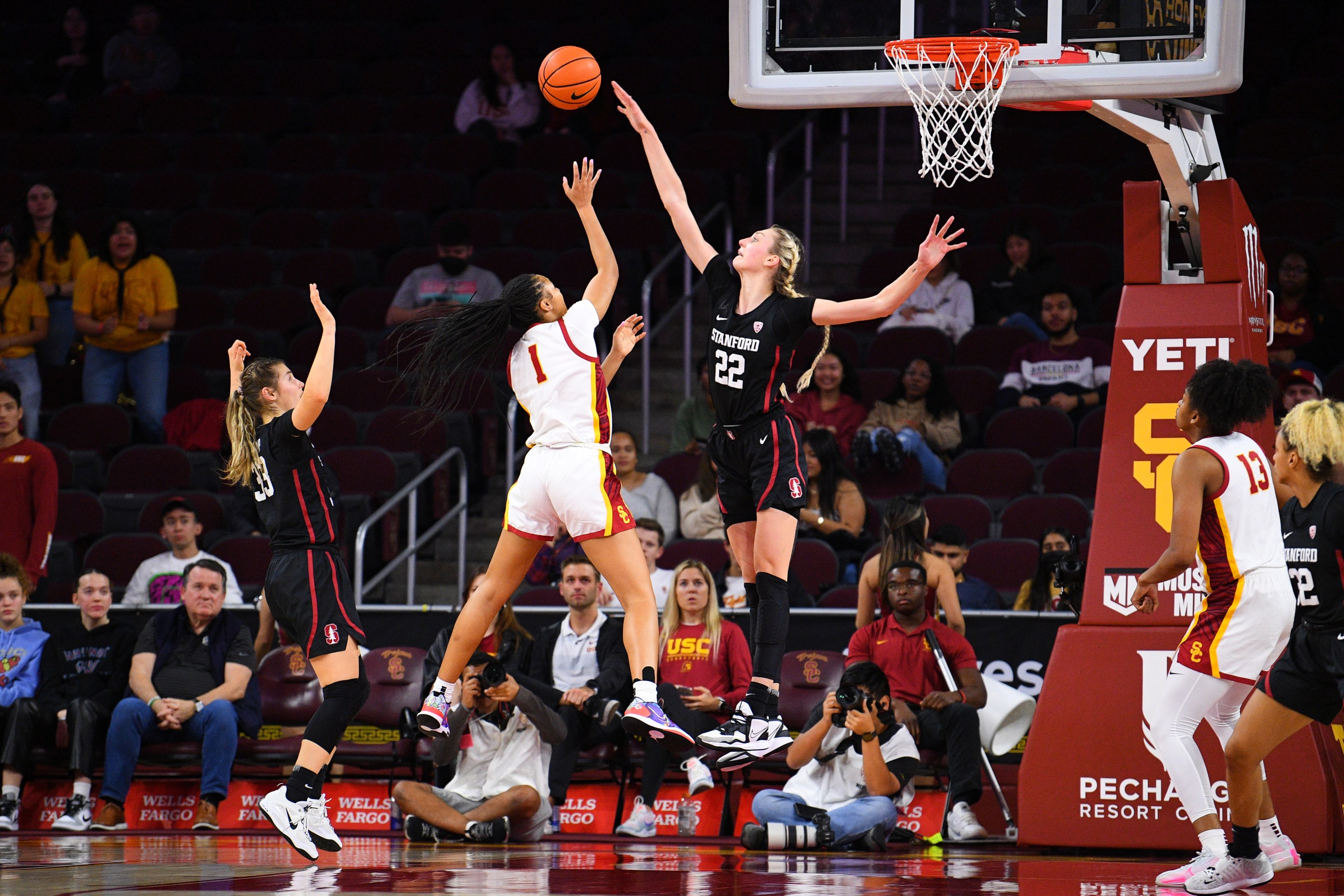A couple weeks ago, I watched No. 3 Stanford drop a game to the unranked Washington Huskies for their second Pac-12 loss of the season. They lost the way good teams sometimes lose to worse teams on paper: turning the ball over lots, a surprise star performance from UW's precocious freshman, Elle Ladine. I didn't have much to say about that game, but I had an idea: If the Cardinal lost one more time this season, I would write about their woes and I would make the headline of the blog simply Stanfraud. Stanfraud! How about that! So brilliant in its simplicity. So acerbic, and very fun. Everyone would go wild for Stanfraud, especially my editors, who would approve of the Stanfraud project and give me a hefty raise for my ingenuity.
You were so close to seeing Stanfraud splashed across the homepage of Defector today, with many comments below reading "great one, Maitreyi!" and "upgraded my subscription to say how awesome this headline is." Alas, in the fourth quarter of Stanford's game against No. 17 UCLA last night, these dreams were swatted to their death. Coaxing dreams towards reality before rudely swatting them to their death is kind of the theme of Stanford basketball right now. Instead of having a hearty laugh together over Stanfraud, we must address the grim news: This Stanford team is still here, looming over us all, ready to block any and all shots.
One perk of a sport whose stars usually play four years in college is that you can watch them play together in the same place for what feels like ages. (Unless you're following UConn, whose players will never play together, ever.) The best stars inspire awe with their play; the best young stars inspire an extra kind of awe. Like, wait, you're this good already and you're going to be here how much longer? Sometimes this can be an overeager line of thought. When I watched a sophomore Haley Jones win Most Outstanding Player in the NCAA championship game two years ago, I had visions of the killer jumper she'd one day pair with her playmaking. She celebrated Senior Night last night, more or less the same outside shot-less player she was back then. (Which is still an extremely good player.) But her teammate and fellow dream-swatter, the 6-foot-4 junior Cameron Brink, really does terrify me. The improvement has been real and staggering. A 61-percent free throw shooter last year, Brink went a much-needed 15-for-15 from the stripe against UCLA.
When we say two-headed monster...
— Stanford Women’s Basketball (@StanfordWBB) February 21, 2023
This is what we mean 👀
📺 » https://t.co/eVw6EHYgLZ#GoStanford pic.twitter.com/GJBctjKfpT
Together, for a night, they beat the Stanfraud allegations. What I once considered a sign of Stanford's weakness—the number of tight games the team has been in this year—could instead be restated as a strength. It takes talent to escape a jam. Last night, the Cardinal trailing by a point to start the fourth quarter, Jones and Brink showed off their physical advantage. Between the two of them and 6-foot-7 freshman Lauren Betts, this is a tall, lanky team—I never know what position anyone's supposed to be playing—and when they want to, they can simply put their opponents in hell. The back-and-forth continued to the last minute, but one possession earlier in the quarter dealt a real blow to the concept of Stanfraud. Jones came up with a block on one end, 6-foot-freakin-4 Brink went coast-to-coast for the finish.
If there was anything unusual about this sequence, in which Stanford seemed to blend size and speed without issue, it was that Brink wasn't the one recording the block. Through 29 games this season, she's blocked 101 shots, breaking the school record she set as a sophomore, which itself broke the record she set as a freshman. Only South Carolina blocks more shots per game than Stanford, and only one player in the country has blocked more shots this year than Brink.
Stanford’s Cameron Brink had a triple-double with… BLOCKS‼️
— The Athletic WBB (@TheAthleticWBB) January 30, 2023
She’s broken Stanford's single-game block record.
🎥 @Pac12Network | @StanfordWBB pic.twitter.com/ey1k0yEn8M
That player, Brooke Flowers of Saint Louis University, has played the same number of games as Brink, but about 200 more minutes. There's the rub, and probably the reason she's not squarely in National Player of the Year conversations: When there are Cameron Brink minutes, she will dominate them, but early foul trouble limits the Cameron Brink minutes we get. Perhaps this is the price to pay for always being in sicko block mode. But most of the time, the rewards outweigh the risks. Brink's timing and discipline have improved since last year, and her minutes are ticking up as a result. Her offensive game, too, will really take off when I start workshopping my next blog, Cameron Brick.






